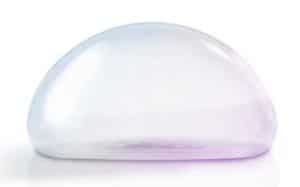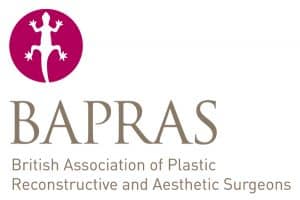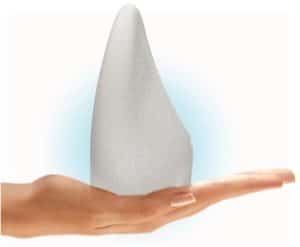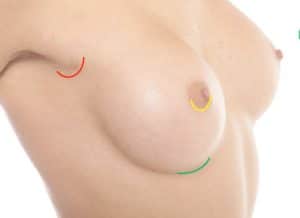
Breast Implants
Breast Implants and all you need to know
10 Harley Street
London W1G 9PF
Breast Implants – All You Need To Know
Silicone breast implants are medical devices that are implanted in the breast in order to increase it’s volume for aesthetic purposes (breast augmentation) or in order to reconstruct it (following full or partial mastectomy).
The latest generation of breast implants are made of a an external shell with a textured or smooth surface made of silicone polymers filled with a form–stable cohesive silicone gel.
The medical grade silicone used by the main manufacturing companies is an extremely biocompatible material, that is very well tolerated by the human body, in the same way as with other prostheses such as titanium prostheses used in orthopaedic surgery.
MANUFACTURING COMPANIES
At the moment there are 28 companies manufacturing breast implants in the world, that offer variable degrees of quality, guarantees and costs. However, only 3 companies stand out on the international market for the extremely high quality of production and innovation and for the extremely precious certification by the American FDA (Food and Drug Administration):
Mentor
Allergan
Silimed
Each manufacturing company has a main line model with specific features that differ from others. The surgeon relies on 2 or 3 different Brands in order to be able to offer the best choice, based on the individual needs of each and every patient and their variable anatomy (shape, quantity of available soft tissue coverage, chest wall dimensions and shape, etc).
THE SHAPE
Round Implants are preferred in order to achieve more fullness on the upper breast pole. The degree of projection of the round implant determines the degree of fullness of the upper pole.
The point of maximum projection of the implant (that should correspond to the position of the Nipple-Areola complex) is located at the very centre of the round implant.
Anatomical (teardrop) implants have the ability to perfectly simulate the anatomically correct breast profile. In many cases the result achieved can be so natural that it may be difficult to detect the presence of implants.
The degree of projection of the anatomical implants determines their ability to fill the central and lower portion of the breasts.
The point of maximum projection (which should correspond to the position of the Nipple-Areola complex) is located in the lower third of the prosthesis.
It is crucial for patients who choose anatomical implants to scrupulously follow the post-operative instructions regarding arm movements and timing for resuming sports activities, in order to allow the body to produce an adequate peri-prosthetic capsule that will adhere to the textured surface of the implant, thus securing it in place and reducing the risk of implant rotation.
POSITION OF THE INCISION
SUBMAMMARY FOLD
The submammary fold is the least traumatic and least invasive access for Breast Augmentation as we dissect under the gland tissue rather than having to cut through the gland as with the areolar approach.
In addition to allow for a quicker insertion of the prosthesis and therefore a shorter procedure, it allows for the resulting scar to be well hidden in the natural skin fold of the inframammary crease.
AREOLA
It was the access most frequently used in the past and it requires an incision placed along the inferior half circumference of the areola.
It is not always possible to utilize this access, especially when the patient has areolas with small diameter (below 3 cm).
The areolar approach has the additional disadvantage of requiring to transect, that is cut through, the entire breast gland in order to insert the implant.
Apart from rare circumstances where the surgeon has the necessity to cut through the gland and “open up” the gland in order to stretch the tissue, as for instance in the case of tuberous breasts, it would be advisable to avoid damaging the breast gland, especially in young patients.
AXILLA
The armpit is the least direct and most complex way of inserting implants; it carries disadvantages for both the surgeon and the patient.
The scar could actually end up being noticeable as women often wear sleeveless tops.
This technique is associated with a higher risk of complications such as post-opeative bleeding (haematoma), implant malpositioning and lymphedema of the breast and arm.
To book a consultation call 07943 277 215 or email clinic@lindafiumara.com
Breast Implants
Breast Implants and all you need to know
Breast Implants – All You
Need To Know
Silicone breast implants are medical devices that are implanted in the breast in order to increase it’s volume for aesthetic purposes (breast augmentation) or in order to reconstruct it (following full or partial mastectomy).
The latest generation of breast implants are made of a an external shell with a textured or smooth surface made of silicone polymers filled with a form–stable cohesive silicone gel.
The medical grade silicone used by the main manufacturing companies is an extremely biocompatible material, that is very well tolerated by the human body, in the same way as with other prostheses such as titanium prostheses used in orthopaedic surgery.
MANUFACTURING COMPANIES
At the moment there are 28 companies manufacturing breast implants in the world, that offer variable degrees of quality, guarantees and costs. However, only 3 companies stand out on the international market for the extremely high quality of production and innovation and for the extremely precious certification by the American FDA (Food and Drug Administration):
Mentor
Allergan
Silimed
Each manufacturing company has a main line model with specific features that differ from others. The surgeon relies on 2 or 3 different Brands in order to be able to offer the best choice, based on the individual needs of each and every patient and their variable anatomy (shape, quantity of available soft tissue coverage, chest wall dimensions and shape, etc).
THE SHAPE

The point of maximum projection of the implant (that should correspond to the position of the Nipple-Areola complex) is located at the very centre of the round implant.
Anatomical (teardrop) implants have the ability to perfectly simulate the anatomically correct breast profile. In many cases the result achieved can be so natural that it may be difficult to detect the presence of implants.
The degree of projection of the anatomical implants determines their ability to fill the central and lower portion of the breasts.
The point of maximum projection (which should correspond to the position of the Nipple-Areola complex) is located in the lower third of the prosthesis.
It is crucial for patients who choose anatomical implants to scrupulously follow the post-operative instructions regarding arm movements and timing for resuming sports activities, in order to allow the body to produce an adequate peri-prosthetic capsule that will adhere to the textured surface of the implant, thus securing it in place and reducing the risk of implant rotation.
POSITION OF THE INCISION
SUBMAMMARY FOLD
The submammary fold is the least traumatic and least invasive access for Breast Augmentation as we dissect under the gland tissue rather than having to cut through the gland as with the areolar approach.
In addition to allow for a quicker insertion of the prosthesis and therefore a shorter procedure, it allows for the resulting scar to be well hidden in the natural skin fold of the inframammary crease.
AREOLA
It was the access most frequently used in the past and it requires an incision placed along the inferior half circumference of the areola.
It is not always possible to utilize this access, especially when the patient has areolas with small diameter (below 3 cm).
The areolar approach has the additional disadvantage of requiring to transect, that is cut through, the entire breast gland in order to insert the implant.
Apart from rare circumstances where the surgeon has the necessity to cut through the gland and “open up” the gland in order to stretch the tissue, as for instance in the case of tuberous breasts, it would be advisable to avoid damaging the breast gland, especially in young patients.
AXILLA
The armpit is the least direct and most complex way of inserting implants; it carries disadvantages for both the surgeon and the patient.
The scar could actually end up being noticeable as women often wear sleeveless tops.
This technique is associated with a higher risk of complications such as post-opeative bleeding (haematoma), implant malpositioning and lymphedema of the breast and arm.
As featured in The Evening Standard and The Telegraph –










Copyright © 2023 Dr Linda Fiumara MD
Designed by Createch

